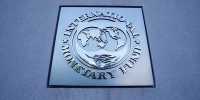A silver lining of coronavirus lockdown is that many cities are now free of traffic jams surprisingly, the epidemic alone cannot smooth urban transport, through new research we can further improve traffic congestion using methods designed to model the spread of infectious diseases. If limiting traffic jams seems like a trivial spin from the important task of disease control, remember that somewhere depending on your belief, 3 to 9 million people die every year due to air pollution. Cars are a major source of this, and the more deadly particles and gases they produce, the more they get stuck in bumper-to-bumper.
In an age where we have created computer models to replicate some of the most complex events in the world, traffic has proved surprisingly resistant. The best models require extensive processing power, while expensive supercomputers require time. Dr. Meead Saberi and colleagues at the University of New South Wales have thought about how pre-existing models of infection transmission, which were used to study how to spread ideas through social media, could be redesigned. In terms of nature communication, they have reported their success in forecasting traffic congestion in six major cities based on these models and infrastructural maps.
The paper notes, “Urban traffic often exhibits high spatial correlations where a junk link adjacent links are more likely to be junk.” In addition, the authors noted that traffic jams occur in different parts of the city at the same time as people rush to work or work, just as people rush to work. He told IFLScience, the modeling of the epidemic was largely unclear to public health as work began, but now that Saberi is talking to the crowd about having an R-0, he can get more acquainted. “R0 quickly spreads something.” “In this case, how fast traffic jams spread through the network.” The higher the R-0, the more other roads get stuck when drivers try to avoid any known obstacles. To their surprise, the authors found that at a time when traffic was bad, each of the cities they studied had several similar R0s, despite very different population densities and public transport systems.
A vaccine for traffic may take much longer than Covid-19, but Saberi told IFLScience that the interim solutions are quite identical. “We’re trying to flatten the curve, encourage driving before or after the summit, or cycling or switching to public transport,” he said. “We hope our model can help us determine the best time to implement the intervention.” The paper, however, acknowledges a weakness. Infection models are built around the fact that, for most infectious diseases, humans are resistant to re-infection after recovery. “This clearly does not apply directly to traffic networks where a link can be retrieved and re-crowded after a short time,” the authors note. Saberi told IFLScience that one of the team’s priorities is to investigate the spread model for rare diseases where re-infection can occur.














